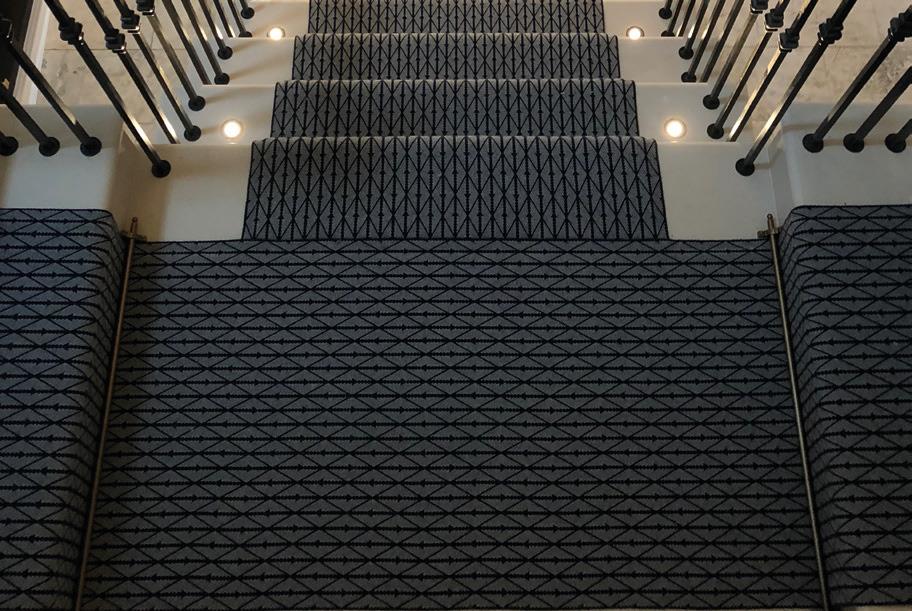
4 minute read
STREET SPIRIT
Nico Goodden, Photographer
Jordan first appeared in the Sherborne Times when he was 16 and on the cusp of a farming apprenticeship. He has gone on to become a talented car upholsterer, learning his craft this past year working for a local company. Jordan also recently moved house and is now the proud owner of his first property.
Advertisement


After finishing art college, I somehow ‘fell’ into working on historic buildings after a chance conversation with a heavy oak carpenter. His boss had a skilled plasterer repairing an old decorative ceiling at his house who needed a hand. When I clapped my eyes on the building, Llowes Court near Hay-on Wye, I was captivated by the place – that’s how it all began. Prior to this, I didn’t even know that the trade existed or that I would be capable of becoming skilled at the job, but I had the enthusiasm and drive to work towards what I was interested in and it has been a
In The Mix
voyage of discovery.
I started with repairing decorative plaster, cornices, Jacobean strapwork ceilings, making moulds and ceiling roses. Later, I moved on to repairing lath and flat plasterwork and over the years to lime. I’d been working on historic buildings for a few years when I secured a place on the William Morris Craft Fellowship, awarded by the SPAB (Society for Protection of Ancient Buildings). It opened my eyes to the wide variety of skills in the historic building field and how they all relate to each other. I’ve now been working with lime mortars, plasters and renders for over 25 years.
Lime was first used by the Egyptians to plaster vaults inside the pyramids in 2,500BCE. The Romans made concrete by mixing lime with volcanic rock, and varieties that would survive under the sea by combining lime with volcanic ash. Despite the harsh salt water, some of these ancient marine structures survive today. The Romans brought lime technology to Britain and built villas and superstructures like Hadrian’s Wall. For more humble dwellings, a small proportion of lime was added to subsoil to make stabilised earth mortars and plasters. Pure lime mixes, being more labour-intensive to produce and therefore more expensive, were saved for topcoat plasters and lime washes (paints).
At The Sherborne, the old plasters are really interesting – the 1720 Palladian building ceilings have stabilised-earth plasters onto riven oak lath. These plasters contain masses of cattle hair, making them strong and incredibly flexible. The plasters do contain lime but only a small proportion.
Plastering and rendering is heavy work, with many projects too much for one person, so in 2008, I set up Lime Repair near Shepton Mallet and started recruiting. We are a small specialist company, and there are three of us on-site at The Sherborne; myself, Caspar and Dom. We’ve worked with Stonewood in the past, so we already knew the team.
All the guys working on The Sherborne are respectful towards me as the only woman ‘builder’ on site; we have a good laugh and there’s a very positive atmosphere. I’m a minority on most projects I work on so it feels normal being amongst ‘the guys’ but it would be nice to see more women in the industry.
With both Tudor and 1720’s phases, peeling back the layers at The Sherborne is fascinating. We started about a year ago with the Georgian building, where we repaired the lath and plaster ceilings. Many of the ceilings were sagging, but the timber joists often supported the plaster failing rather than the plaster itself. Some larger patches collapsed due to roof leaks so the carpenters repaired the structure first before we repaired the lath and plaster.
At the beginning of the project, we sent samples of the ceiling plaster off for analysis to Rose of Jericho, a Dorchester-based materials supplier. I was convinced that as the plaster had little lime and was mostly subsoil and hair, it was probably the original and not a later phase of work or repair. The analysis confirmed my theory and it’s incredible to think that most of the plaster in the main house is still firmly intact. thesherborne.uk
Parts of the building are ancient; on the ground floor of the Tudor wing there’s a large oak-pegged doorway dating back to the 13th Century, and the moulded beams are mid-15th Century. Likewise, the plaster on the wing’s walls is also Tudor – a rare find. Considering its age, it’s in good condition. The strength of the plaster is in its flexibility – with so much hair in it, it could almost be a carpet! I’m really looking forward to seeing The Sherborne finished; top-quality contemporary design set against beautifully repaired historic buildings is very pleasing, if you get it right.
That’s what’s beautiful about this project; the various buildings are full of surprises. Take the ceiling roses in the Palladian House…we took some of these down for repair and found that some elements were in fact papier mâché fixed over a timber armature. We’re lucky they remained in such a stable condition when the building had fallen into disrepair. But this is the crux of our work – understanding the materials and learning how to repair and conserve them for future generations. You have to be aware of what materials you are working with and respect their condition. You can’t treat papier mâché like plaster; if you clean it or repair it using water, the paste could dissolve.
Most people don’t see ‘plaster’ or ‘pointing’ as a particularly historic finish, but it’s as important as the stone or the windows. It breaks my heart to see old, intact plasters being hacked off or old lime pointing being raked out just because it’s not a uniform colour –or has a few cracks and undulations. ‘Imperfections’ go a long way to giving historic buildings character. Today, we really struggle to match these traditional styles. Throughout Dorset and Somerset a few examples of very old lime putty pointing remain, but we are losing these – I think these finishes are precious and should be retained at all costs.









